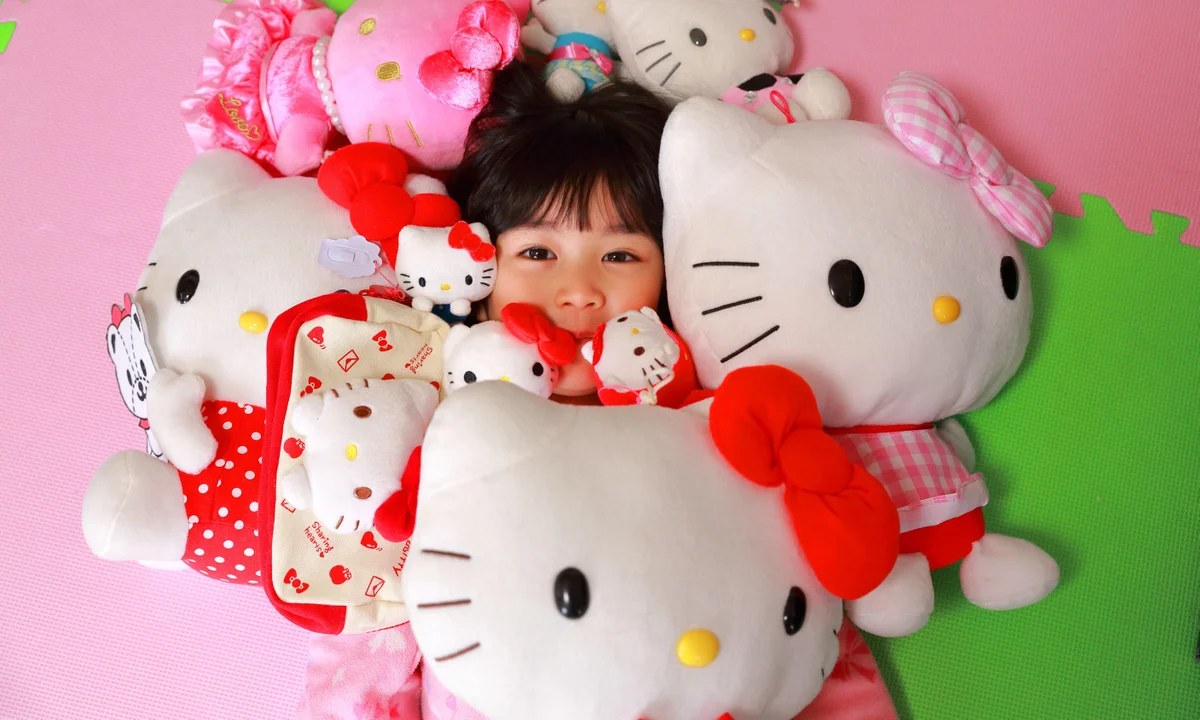Created in 1974 by designer Yuko Shimizu, Hello Kitty has generated $84.5 billion and spawned more than 50 000 products. This feature traces her rise, the marketing strategies behind her omnipresence, and the lessons entrepreneurs can learn.

A mouthless cartoon cat with a red bow may be the world’s most lucrative silent storyteller. Hello Kitty, introduced by Sanrio in 1974, turns fifty this year. Over those decades, she has become an international phenomenon, adorning everything from stationery to airplanes. According to a 2022 report cited by Business Standard, Hello Kitty (or “Kitty White”) has generated $84.5 billion in revenue by selling millions of merchandise items worldwide. This places her among the top‑grossing media franchises on the planet, alongside Pokémon and Mickey Mouse.
Yuko Shimizu designed the original Hello Kitty for a coin purse. Sanrio’s insight was to license the character widely and keep her narrative ambiguous. With no mouth, she could be a blank canvas onto which consumers projected their own emotions. Her “kawaii” (cute) aesthetic tapped into a powerful cultural current in Japan and beyond.
Sanrio adopted a licensing model long before it became common. By partnering with thousands of manufacturers, the company ensured that Hello Kitty appeared on bags, bottles, spoons, lunchboxes—and even toilet paper. Online searches reveal more than 50 000 different Hello Kitty products, collectively worth billions of dollars. The saturation works because each item feels like an extension of a familiar friend rather than a forced brand extension. The brand even stretches to experiences: a Taiwanese airline operates a Hello Kitty jet.

Hello Kitty’s success defies conventional wisdom that novelty drives sales. Her design has remained largely unchanged. Instead, the character continually adapts through collaborations with fashion designers, artists and technology companies. This balance of consistency and reinvention keeps her relevant. Crucially, Hello Kitty transcends generational boundaries; parents introduce her to children, creating a multigenerational fan base.
For entrepreneurs and cultural creators, Hello Kitty illustrates the power of controlled ambiguity, licensing and transmedia storytelling. A simple, emotionally resonant design can travel further than complex narratives. Licensing can turn intellectual property into a global ecosystem, but only if quality and authenticity are maintained. Finally, Hello Kitty’s story underscores the importance of perseverance: she has thrived through economic downturns and shifts in cultural taste by leaning into adaptability and nostalgia.

Kelly Dowd, MBA, MA, is an author, systems architect, and Editor-in-Chief of WTM MEDIA. Dowd examines the intersections of people, power, politics, and design—bringing clarity to the forces that shape democracy, influence culture, and determine the future of global society. Their work blends rigorous analysis with cultural insight, inviting readers to think critically about the world and its unfolding narratives.
Kai Chen is a guest writer who writes about culture and commerce for WTM MEDIA. With roots in Tokyo and New York, he explores how Asian pop icons influence global markets and what creatives can learn from them.

Elon Musk’s $56 billion pay package, restored by Tesla shareholders after court challenges, made global headlines. But beneath the spectacle lies a deeper design flaw: the hero economy. In worshipping visionaries, capitalism has built cathedrals without conscience.

The U.S. Supreme Court’s reinstatement of restrictions on gender-inclusive passports has reignited a quiet crisis of belonging. It is not simply about travel. It is about who decides the architecture of identity—and whether selfhood must pass through permission.

A U.S. federal judge’s ruling to compel the reinstatement of food aid funding is more than a legal victory — it is a moral reckoning. Hunger, as this decision reveals, is never a natural disaster. It is a policy design flaw.